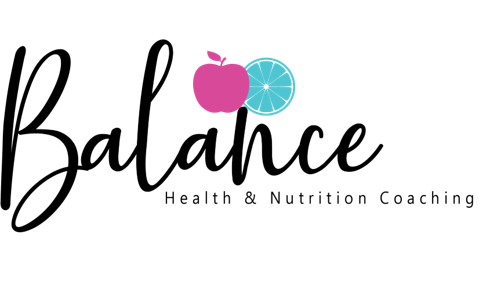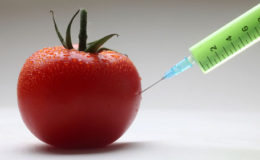I know it’s time to get back on track in a number of ways, including my eating patterns. Are you feeling the same way? Many of us have fallen off the wagon (yes… me too!!). During the quarantine, I found myself falling into old eating patterns. At first, it didn’t seem to affect me, and then all of a sudden I felt awful. I felt sluggish, moody, and started gaining weight. While I still was eating healthy foods, I realized I wasn’t eating enough of them (this was NOT my norm) and this was contributing to how I felt. I realized I needed to get back to the basics…eating foods that nourished my body, help it return to its natural state, and eat the rainbow.
I recently did a post on “eating the rainbow” and felt it would be helpful to elaborate on WHY it’s important and HOW you can work “eating the rainbow” into your eating patterns.
You might ask why it’s important to “eat the rainbow.” When we focus on the colors of the foods we eat, it helps to ensure we get the phytonutrients we need to support our health. Phytonutrients are natural compounds that are found in plants. They help reduce risk of developing chronic disease such as diabetes, heart disease, and cancer. They also protect us from environmental toxins and stimulate enzymes that help our body rid itself of toxins. Phytonutrients boost our immune system, improve our cardiovascular health, promote healthy estrogen metabolism, and stimulate the death of cancer cells.
As you probably guessed, we can get plenty of phytonutrients by eating fruits and vegetables. We can also get them from whole grains, legumes, herbs, spices, nuts, seeds, and teas. Phytonutrients come in the colors of the rainbow: green, yellow, orange, red, blue-purple, and even white. To support our health through the intake of phytonutrients, it’s important to focus on eating a variety of colors each day. A great goal would be to aim to eat 1-2 of each color per day.
Here’s a few ways to add COLOR to your diet and focus on eating the rainbow:
RED– Lycopene is a red-colored phytonutrient found in tomatoes and it protects against prostate, breast, and skin cancer. An interesting trait of tomatoes is that the lycopene is more absorbable and available to the body when it’s cooked. Also, it’s fat-soluble meaning it requires fat to optimize absorption. Try making tomato sauce and adding olive oil.
Here are a few suggestions for adding RED to your diet:
- Add tomatoes, goji berries, raspberries, pomegranate seeds, or pink grapefruit sections to your green salad
- Use marinara sauce on your veggies or on zucchini or miracle noodles when making a “pasta” dish
- Prepare a salsa using chopped tomatoes, chopped red onions, and chili peppers (3 for 1!)
ORANGE– Orange foods contain the phytonutrients beta-carotene and bioflavonoids.
Beta-carotene is converted into vitamin A in the body. Beta-carotene containing foods (carrots, sweet potatoes, pumpkin) are another food that need to be cooked to obtain the most benefit. The heat frees the carotenoids, including the fiber, and by adding some fat you will help your body absorb them. Try drizzling some olive oil over cooked carrots for a tasty combination.
Bioflavonoids are found in foods such as oranges, peaches, nectarines, or clementines. They are different than beta-carotene because they are water-soluble, meaning your body can absorb them without cooking or the addition of fat.
Here are a few suggestions for adding ORANGE to your diet:
- Have a sweet potato instead of baked
- Sprinkle turmeric over eggs or in a soup
- Put orange slices in your water pitcher
- Puree carrots, butternut squash, and/or pumpkin and use as a base for a soup
- Have a peach, clementine, or nectarine for your afternoon snack
YELLOW-Yellow foods contain fruits such as golden delicious apples and vegetables like bell peppers. Another yellow food is ginger, which is known for its anti-inflammatory properties. Yellow foods can contain the phytonutrients Lutein and Zeaxanthin and they are both carotenoids. Because they are a carotenoid, they are fat-soluble and need fat to be absorbed.
Here are a few suggestions for adding YELLOW to your diet:
- Slice a banana and add to an unsweetened yogurt
- Add a yellow bell pepper to a salad or dip in guacamole
- Grate ginger into a soup
- Enjoy pineapple slices for your dessert
GREEN-You should have no difficulty finding green foods. Because green foods can help the liver to function better, they assist in balancing hormones. There are 3 phytonutrients in green foods worthy of mention.
Glucosinolates– Found in cruciferous veggies like broccoli, they can change the way estrogen is metabolized by the body. Therefore, eating green veggies is associated with a decreased risk of estrogen related cancers, such as breast and uterine.
Phytosterols– Also known as plant sterols, they block the absorption of cholesterol from food in the gut.
Catechins– Can be found in green tea. Having just one cup of green tea per day has been shown to reduce breast cancer by 50%.
Ways to add more GREEN to your diet:
- Top your burger or chicken breast with sliced avocado
- Use extra virgin olive oil instead of corn or soybean oil
- Add some greens to your morning smoothie
- Squeeze fresh lime into your water
- Add dill, parsley, or basil to any meat or vegetable dish
BLUE/PURPLE/BLACK- Of all the colors, this is the one that people eat the least of. Unfortunately, eating too few of this color can really affect your health because the phytonutrients protect the brain, heart, and vasculature. One of the reasons people don’t eat as much of these is because there are not as many options. However, there are foods like purple cauliflower, black olives, purple kale, and black rice that can help you get more of this color.
This category contains 2 powerful phytonutrients: Resveratrol and Pterostilbene.
Resveratrol can help the aging process by reducing blood sugar and inflammation. Pterostilben is found in blueberries and grapes and is thought to ward off cancer, helps to keep cholesterol and triglycerides low, and could help preserve cognition (um…yes please!)
Ways to add more BLUE/PURPLE/BLACK to your diet:
- Add berries to your smoothie
- Try purple kale instead of green
- Substitute purple or black rice for white
- Shred some purple cabbage into a salad
WHITE/TAN/BROWN- You may have thought of processed foods when you heard this one, right? Instead of thinking about bagels or pasta, think nuts, legumes, spices, seeds, and whole grains. This also includes vegetables like mushrooms, garlic, onions, and shallots.
Two phytonutrients in this category include Allicin and Lignans. Allicin is one of garlic’s medicinal compounds that contributes to its anti-cancer and blood pressure lowering effects. To maximize these benefits, let chopped garlic sit for 5-10 minutes before using.
Lignans are anti-inflammatory, promote healthy blood vessels, and are thought to act as an anti-cancer agent. Flaxseeds, sunflower seeds, and cashews are great options.
Ways to add more WHITE/TAN/BROWN foods to your diet:
- Add cocoa powder to your smoothie
- Add brown spices to your cooking or baking (cinnamon, clove, allspice)
- Add diced onion to an omelet or stir-fry
- Dip veggies into hummus (garbanzo beans)
- Add mushrooms to a soup
As you can see, the benefits of eating the rainbow are numerous. Hopefully after reading this, you have some ideas of how to fit them in and can begin to make them part of your daily diet.
Encouraging my clients to eat the rainbow is something I work into all of my client’s nutrition plans. Are you ready to add this into your life as you work toward finding balance? Head to my website https://balancehealthandnutrition.com/work-with-julie/ to schedule a Free 30-Minute Consultation and learn how I can help.
Wishing you BALANCE,
Julie










